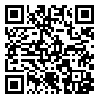BibTeX | RIS | EndNote | Medlars | ProCite | Reference Manager | RefWorks
Send citation to:
URL: http://hnmj.gums.ac.ir/article-1-2068-en.html


 , Hossein Rahimi2
, Hossein Rahimi2 

 , Seyed Mohammad Mousavi Mirzaei3
, Seyed Mohammad Mousavi Mirzaei3 

 , Hamidreza BahramiTaghanaki4
, Hamidreza BahramiTaghanaki4 

 , Seyyed Abolfazl Vagharseyyedin *5
, Seyyed Abolfazl Vagharseyyedin *5 


2- Nursing (MSc), Instructor in Nursing, School of Nursing and Midwifery, Neyshabur University of Medical Sciences, Neyshabur, Iran
3- Assistant Professor, Department of Neurology, School of Medicine, Birjand University of Medical Sciences, Birjand, Iran
4- Associate Professor, Department of Chinese and Complementary Medicine, Mashhad University of Medical Sciences, Mashhad, Iran
5- Associate Professor, Department of Nursing, School of Nursing and Midwifery, Birjand University of Medical Sciences, Birjand, Iran ,
Introduction: Psychological distress is prevalent among the primary family caregivers of patients with stroke.
Objective: This study evaluated the effects of acupressure on anxiety, stress, and depression among the primary family caregivers of Patient With Stroke.
Materials and Methods: In this sham-controlled randomized clinical trial, 96 family caregivers of Patient with Stroke were selected and allocated to the acupressure (n=40) and sham (n=42) groups. The study data were collected using demographic questionnaires for the patients and caregivers, the Barthel index (for assessing independence in daily living activities,) and the Persian version of the Depression Anxiety Stress Scale (DASS). Participants in the acupressure group received training about acupressure on the Yin Tang and HT7 points, while participants in the sham group received training about acupressure on the CV24 and TB5 sham points. The acupressure intervention lasted for 30 consecutive days. Statistical tests, including the Kolmogorov-Smirnov test, the independent t test, the Chi-square test, the Fisher exact test, the Wilcoxon, Mann-Whitney U test, and the analysis of covariance (ANCOVA) were applied to analyze the data.
Results: The mean ages of the participants were 46.1±12.1 years in the acupressure group and 42.7±11.8 years in the sham group. The mean ages of the patients in these groups were 75.1±8.1 and 76.8±9.7 years; respectively. Regarding the demographic characteristics, no significant differences were observed between the acupressure and the sham groups. Regarding the pre-test mean scores of anxieties, stress, and depression, there were no significant differences between the acupressure and the sham groups. Anxiety and stress significantly reduced after the intervention only in the acupressure group (P<0.05). However, depression did not change substantially during the study. The ANCOVA indicated significant differences between the two groups after the intervention regarding anxiety and stress. In other words, in the acupressure group, anxiety and stress significantly improved compared to the sham group (P<0.05).
Conclusion: It seems that the acupressure on the Yin Tang and HT7 points can help manage anxiety and stress among the primary family caregivers of Patient With Stroke.
Received: 2023/01/25 | Accepted: 2023/01/20 | Published: 2023/01/20
| Rights and permissions | |
 | This work is licensed under a Creative Commons Attribution-NonCommercial 4.0 International License. |



